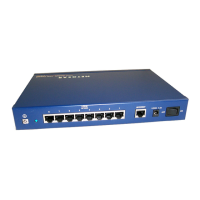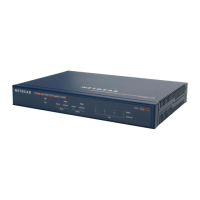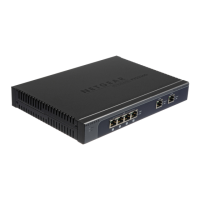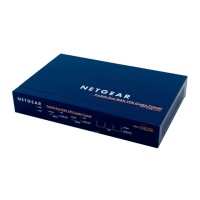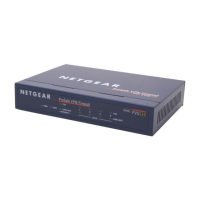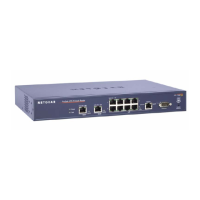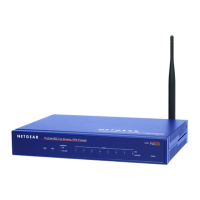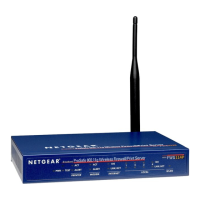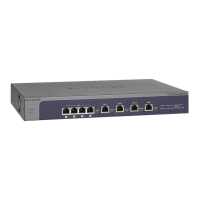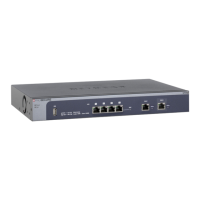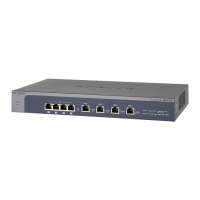Troubleshooting
324
ProSafe Wireless-N 8-Port Gigabit VPN Firewall FVS318N
• Your ISP allows only one Ethernet MAC address to connect to the Internet, and might
check for your PC’s MAC address. In this case, do one of the following:
- Inform yo
ur ISP that you have bought a new network device, and ask them to use the
wireless VPN firewall’s MAC address.
- Config
ure your wireless VPN firewall to spoof your PC’s MAC address. You can do
this in the Router’s MAC Address section on the WAN Advanced Options screen. For
more information, see Configure Advanced WAN Options
and Other Tasks on
page 43.
If your wireless VPN firewall can obtain an IP address, but an attached PC is unable to load
any web p
ages from the Internet:
• Y
our PC might not recognize any DNS server addresses.
A DNS server is a host on the Internet that translates Internet names (such as
www
.netgear.com) to numeric IP addresses. Typically your ISP provides the addresses of
one o
r two DNS servers for your use. You can configure your PC manually with DNS
addresses, as explained in your operating system documentation.
• Y
our PC might not have the wireless VPN firewall configured as its TCP/IP gateway.
Troubleshooting the IPv6 Connection
If you have difficulty connecting over an IPv6 section, there might be an incorrect
configuration on the wireless VPN firewall or the computer from which you are trying to
connect to the wireless VPN firewall:
Check the wireless VPN firewall:
• By d
efault, the wireless VPN firewall is set to IPv4-only mode. Make sure that the wireless
VPN firewall is set to IPv4/IPv6 mode (see Configure the IPv6 Routing Mode on
page 36).
• Make
sure that the ISP settings are correct (see Manually Configure an IPv6 Internet
Connection on
page 34). The wireless VPN firewall cannot receive a valid IPv6 address if
the Internet connection is not correctly configured.
• Make
sure that the wireless VPN firewall can provide IPv6 addresses to the computers on
the LAN (see Configure IPv6 LAN Settings on p
age 64). Check the settings on the LAN
Setup (IPv6) screen, and if applicable for your type of configuration, o
n the RADVD
screen.
Check the computer:
• Make
sure that the operating system supports IPv6. Normally, the following operating
systems support IPv6:
- Wind
ows 7, all 32- and 64-bit versions
- Wind
ows Vista, all 32- and 64-bit versions
- Wind
ows XP Professional SP3 (32- and 64-bit)
- Wind
ows Server 2008, all versions
- Wind
ows Server 2008 R2, all versions
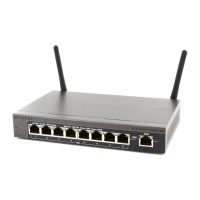
